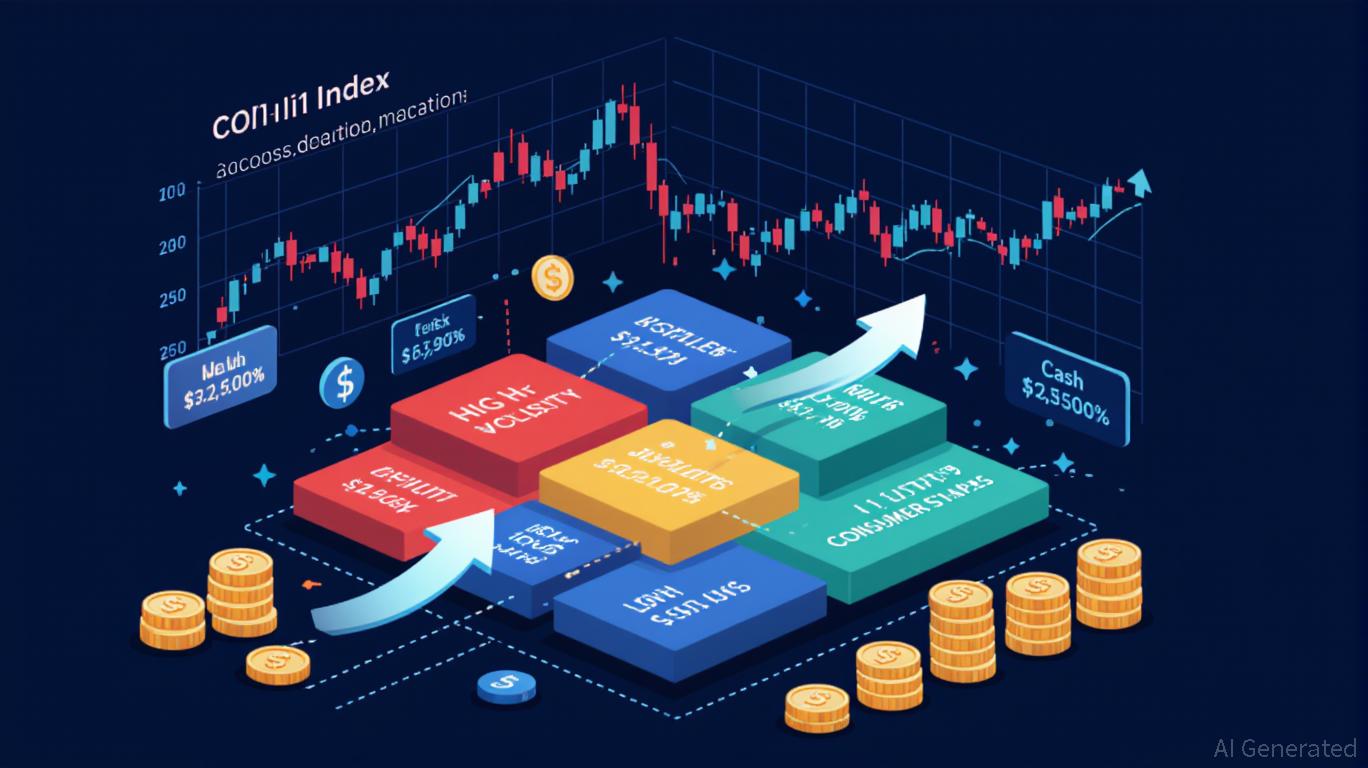Circle and Crossmint Collaborate to Shape the Financial Landscape for People and AI Agents
- Circle partners with Crossmint to expand USDC across multiple blockchains, enhancing stablecoin payments for humans and AI agents. - AI-driven use cases include automated payments for taxis, content publishing, and data storage, positioning USDC as a programmable finance asset. - The initiative targets high-inflation economies like Colombia, where MoneyGram’s crypto app offers USDC as an inflation hedge via Crossmint’s tech. - Despite USDT’s dominance ($173B market cap), Circle emphasizes USDC’s regulato

Circle, the company behind the
This collaboration also points to the increasing interest in AI-driven applications for stablecoins. Developers at
Expanding USDC’s infrastructure also meets the needs of economies facing high inflation, where stablecoins act as crucial financial tools. MoneyGram, a leading remittance company, recently introduced a crypto payment app in Colombia powered by Crossmint’s technology, allowing users to receive and hold USDC as a safeguard against the weakening peso. This development mirrors trends in countries like Argentina, where stablecoins are increasingly used to avoid currency restrictions and protect against inflation. With MoneyGram’s network of 50 million customers in 190 countries, this partnership could significantly boost stablecoin adoption.
However, USDC continues to compete with Tether’s
The partnership also covers additional blockchain networks, such as Tempo—a payments-centric layer-1 blockchain developed with support from Stripe and Paradigm. Tempo’s infrastructure, built for speed and scalability, aligns with Crossmint’s mission to expand USDC’s practical uses. This alliance highlights the critical role of interoperability in driving stablecoin adoption, as partners strive to streamline cross-border payments and on-chain processes.
This initiative mirrors a larger movement in the industry toward institutional use of stablecoins, with companies like MoneyGram and infrastructure firms such as Crossmint playing central roles in widening access. Although challenges like competition from leading stablecoins such as USDT persist, the partnership marks a shift toward programmable and AI-integrated financial systems. As stablecoins become more intertwined with both traditional and digital finance, their influence on global liquidity and economic stability is expected to remain a key concern for both investors and regulators.
Disclaimer: The content of this article solely reflects the author's opinion and does not represent the platform in any capacity. This article is not intended to serve as a reference for making investment decisions.
You may also like
Ethereum News Update: Avail’s Nexus Bridges Liquidity Across 12 Blockchains, Tackling Fragmentation
- Avail's Nexus Mainnet launches as a cross-chain execution layer unifying liquidity across 12 blockchains including Ethereum and BNB Chain. - The intent-solver architecture automates optimal routing while aggregating liquidity from multiple chains through Avail's data availability layer. - Developers gain simplified cross-chain integration via SDKs and APIs, enabling real-time collateral pools and intent-based trading without managing bridges. - With Solana integration planned and Infinity Blocks roadmap

Ethereum News Update: Ethereum Drives Institutional Transformation with Amundi Tokenizing Major Fund
- Amundi tokenizes a money market fund on Ethereum , signaling institutional adoption of blockchain-based asset management. - Ethereum's upgrades like PeerDAS and Bhutan's $970k ETH staking highlight growing institutional trust in its infrastructure. - CoinShares' $250M Bitcoin Miners ETF and global digital ID initiatives underscore tokenization's role in modernizing finance. - Ethereum's $3,100 price resistance and technical indicators suggest potential for long-term resilience amid scaling improvements.

Hyperliquid News Today: Hyperliquid Adopts Tidewater’s Strategy to Streamline Crypto Risk Management
- Hyperliquid introduces automated downsizing to stabilize HYPE, which dropped 52% from its peak. - Strategy mirrors Tidewater Renewables' capacity management, balancing short-term volatility with long-term stability. - Hyperliquid Strategies DAT plans $300M HYPE buybacks to inject liquidity and institutional-grade risk frameworks. - Market faces $1.89B+ liquidation risks if Bitcoin/Ethereum surge, prompting automated buffers to prevent cascading sell-offs. - Approach reflects growing DeFi adoption of algo
The Unexpected COAI Price Decline: Key Lessons for Investors from the November 2025 Market Turbulence
- COAI Index's 88% November 2025 collapse stemmed from C3.ai governance failures, regulatory ambiguity, and panic-driven herd behavior. - Market psychology amplified losses as investors overreacted to AI sector risks, ignoring fundamentals and triggering liquidity crises. - Diversification, cash reserves, and AI-driven tools helped mitigate risks, emphasizing long-term strategies over speculative hype. - The crisis exposed dangers of overreliance on AI/DeFi narratives, urging disciplined, diversified portf
